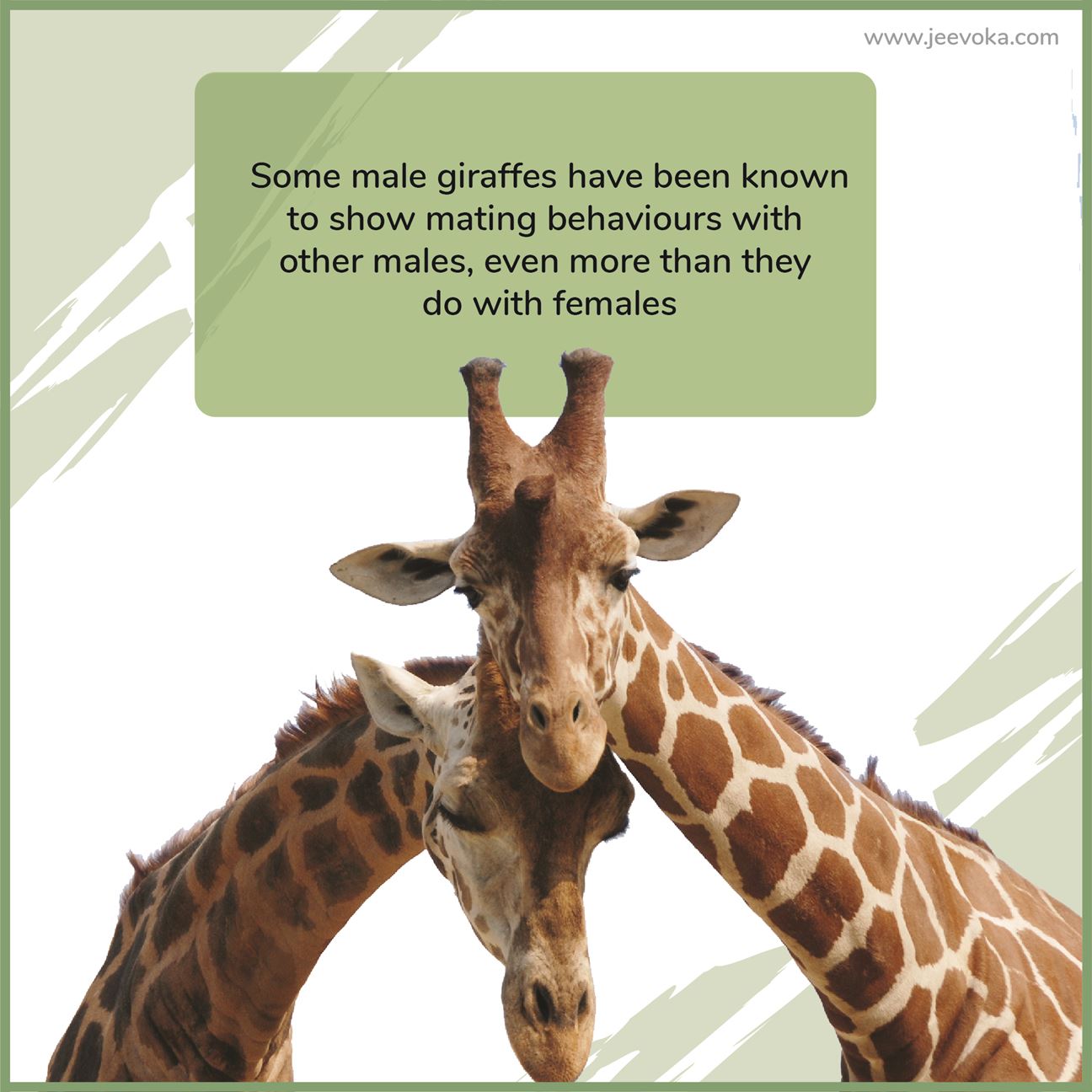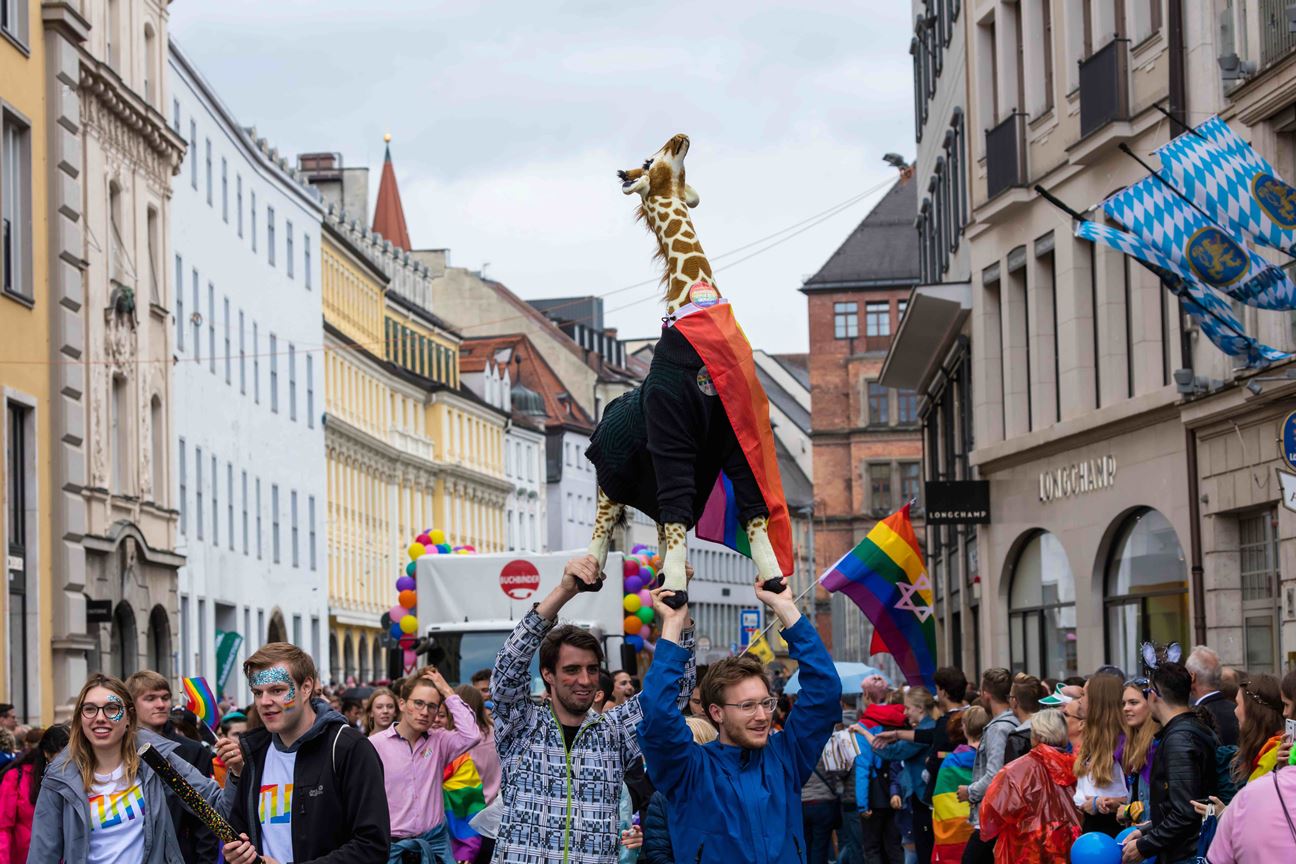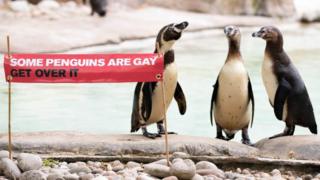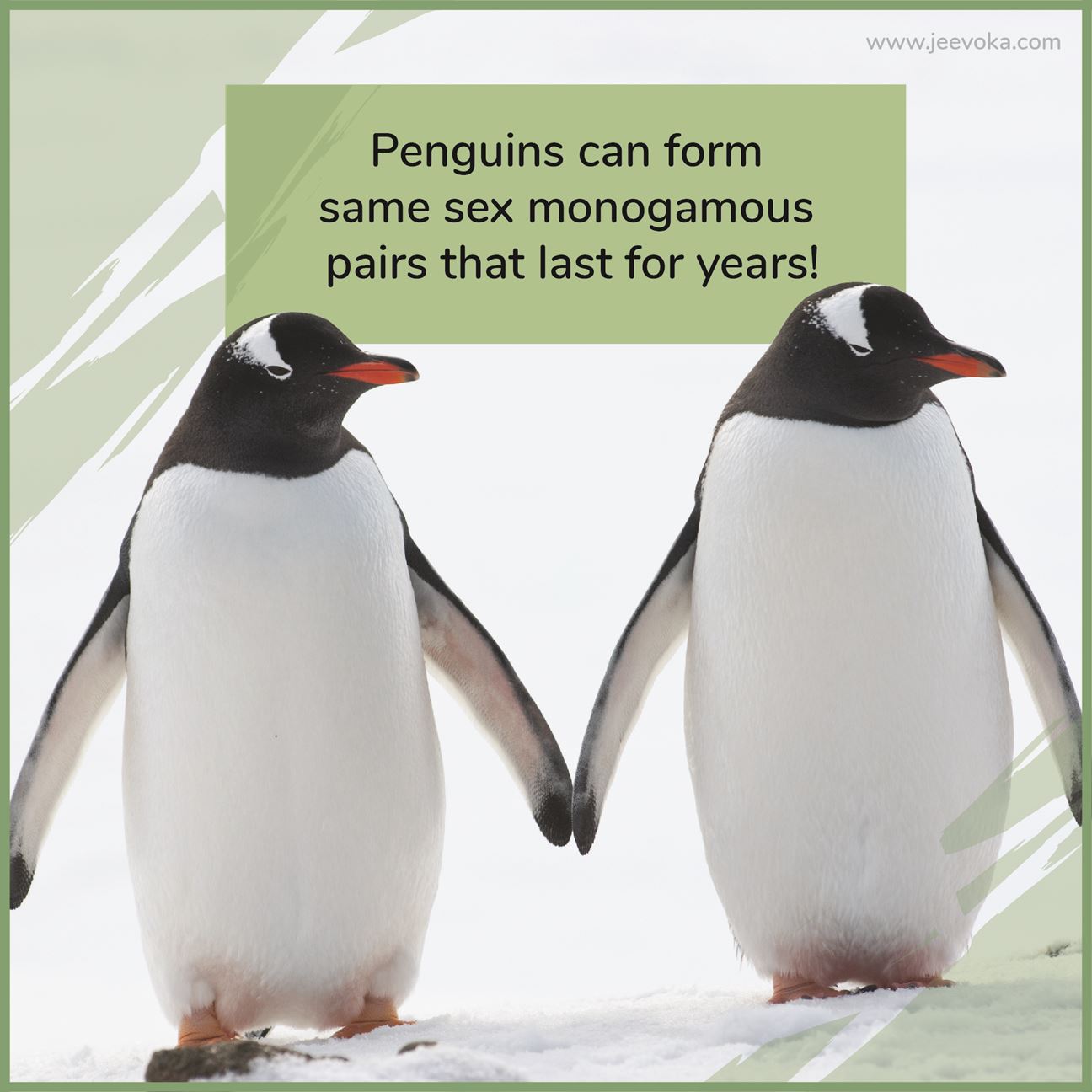A small insight into the wide variety of different sexual behaviours, including homosexuality, bisexuality and more, seen in the animal kingdom.
Recent comments last week by a British MP about gay giraffes resulted in various individuals arguing giraffe sexuality amidst Brexit discussions. Do giraffes have sexual preferences? Is it just a display of dominance? Is it only males? There are answers, and more.
Surprisingly, animal sexuality is a growing field of ethological studies. It’s more common than you’d think. Homosexual behaviour has been displayed in animals since, well, forever. We’ve only recently learnt to see it, of course. Overlooked, or maybe even ignored for years as ‘friendly behaviour’ between the same sex, animal sexuality and courting behaviours can be as diverse as human sexuality. How has this phenomenon been observed? Some behaviours have been observed in captivity, and others are population-wide scientific studies on homosexual breeding or pair-formation in the wild.

Where giraffes are concerned, some ecologists say it is an aggressive display of dominance seen mostly in males. However, other observations show it in females and have documented gentle courtship and displays of affection between same-sex male and female individuals, as well as attempts at copulation. Bruce Bagemihl, one of the lead researchers of homosexual behaviour in animals, wrote in his famous book Biological Exuberance that 94% of intimate and sexual activity of one population of giraffes was between male individuals. Female giraffes, who live in female-only herds, have been seen to use bulls for reproduction, and then going back to continuing homosexual social interactions of intimacy with each other, including necking, caressing, licking and mounting. So, yes, they display homosexual behaviour. Giraffes have even been used as a symbol of homosexuality in nature (an argument against the “homosexuality is unnatural” claims) in various LGBTQ+ events.
 Bavaria LGBTQ+ pride featuring a stuffed giraffe
Bavaria LGBTQ+ pride featuring a stuffed giraffe
If you are generally sceptical of unorthodox-sounding claims on the internet, let's look at the results of a scientific study conducted by Young, Zaun and WanderVerf, in 2008, elaborated in a paper called 'Successful same-sex pairing in Laysan albatross’[1]. It was observed that female albatross paired together for years to raise offspring successfully. The pair was not genetically related to each other, meaning they were not co-operative breeding; they were mated pairs that were raising an offspring. The study, that was conducted over three years, and managed to follow the same pairs found that the multiple offspring that a pair raised over the years was genetically related to either of them. This means that both females have had opportunities to breed with a male and then chose to raise an offspring successfully with another female. This is a rare example of potential surrogacy and homosexual parenting in the animal kingdom. They also discovered that the female-male sex ratio was 59% female to 41% male. Is this a result of a skewed sex ratio? If it is, then evolutionarily, same-sex parenting has ensured the survival of the offspring, as young albatross needs heavy parenting to be able to survive to adulthood. Thus, two females raising a pair resulted in more success than a single albatross, thus showing that homosexual parenting can be an evolutionarily successful strategy.
However, this does not always have to be the consequence of a lack of males or females that have resulted in homosexual behaviour. It does not even have to be about raising offspring. Several species display homosexual behaviour, supposedly without it being related to progeny or sex-ratio in any way. It is estimated that 8% of lion mating pairs are between males, however; They do not follow the same mating behaviours as they do with females. They stay together during the mating period and display sexual behaviours, but without any of the procedures that ensure reproduction. This has also been observed with females, but only in captivity. It is something that they seemingly do as a social interaction only.

What about primates? Humans are primates. Do other primates display other sexualities as we do? In fact, primates display some of the most interesting displays of sexuality in the animal kingdom. Bonobos are known to display bisexual traits, with male and female bonobos displaying mating behaviour with both sexes. Female bonobos particularly engage in large amounts of sexual activities and intimacy with each other. Some researchers claim that is a way to defuse tension and resolve conflict before it even begins. Other incidences have been noted of female bonobos holding eye contact with each other during mating, which is a possessive mated-couple behaviour. This has also been seen in gorillas, orangutans, macaques, and various other primates.

London Zoo’s banner, with penguins joining LGBTQ+ Pride 2019 (inspired by Stonewall’s Get over it
campaign) Source: BBC UK
Scientific observations aside, the displays of homosexual behaviours in zoos have become a cultural phenomenon in the last two decades. The first and most famous homosexual zoo pair were Roy and Silo, two chinstrap penguins in New York’s Central Park Zoo, who performed mating rituals, and stayed monogamous for seven years! They attempted to steal eggs from other pairs to try to raise as their own. Eventually, the zoo gave them a fake egg to see if they sat on it and incubated it, and they did- very well according to the zoo officials. The zoo took an extra egg from a heterosexual couple that had previously failed to simultaneously raise two eggs and gave it to Roy and Silo. They successfully hatched the egg and had a female baby penguin named Tango. Tango herself went on to form a pair with another female for two whole mating cycles. This story was turned into a children's book called ‘And Tango Makes Three’, by Parnell and Richardson, which, while it received many awards for normalising homosexuality, it was also banned in certain regions of the United States. Following this pair, various zoos started noticing that there were homosexual pairs between penguins sometimes lasting for years. It was estimated that 1 in 20 penguins display long-term monogamous homosexual relationships.

Thus, we see various displays of different sexuality and behaviours in nature. Bruce Bagemihl, the author of Biological Exuberance says that over 1,500 species display homosexual behaviours, and these are intrinsically and naturally a part of their social behaviours. In the 21st century, the relevance of this is ever-increasing as we see these displays as normal, occurring all over the animal kingdom.